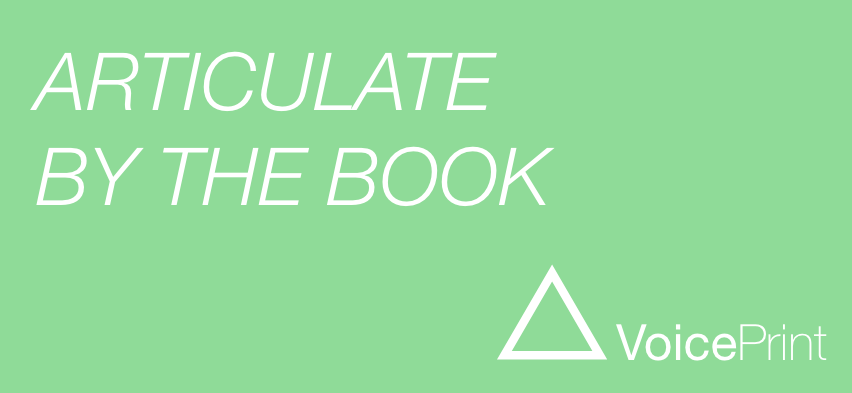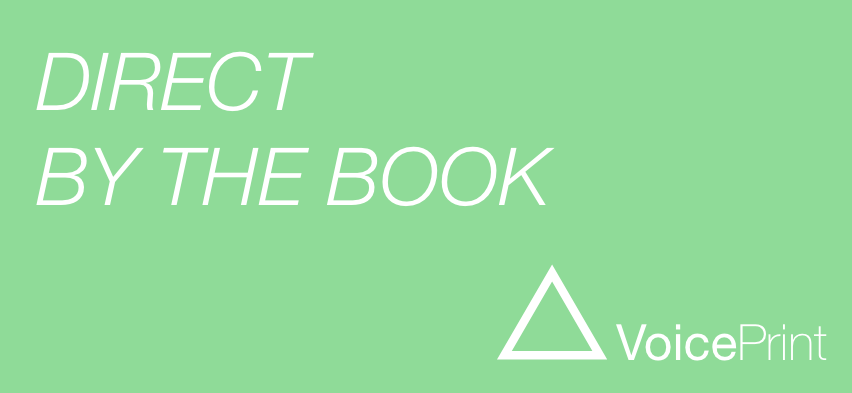Challenge and challenging are two of the most over-used words in the occupational vocabulary.
‘I’m looking for a more challenging role.’ ‘He doesn’t challenge himself enough.’ ‘We’re operating in a very challenging environment.’ ‘She can be quite challenging to work with.’ ‘I want a coach who will challenge me.’ When a word becomes so commonplace, it becomes dulled and fuzzy. We lose touch touch with its meaning. And that compromises its value.
So the purpose of this piece is to draw a clear distinction between different types of challenging, and to sharpen our in-the-moment awareness in a useful way.
VoicePrint uses the word Challenge in a very particular sense. In the VoicePrint model of effective communicating, Challenge is the voice of interruption. It interrupts the flow of what is happening in order to re-focus it, to take it in a different direction. But in what direction?
VoicePrint’s proposition is that an effective use of the Challenge voice takes the proceedings in a more productive direction. But how do you determine which direction is going to be more productive?
Sometimes you simply don’t know. All you do know is that what is currently happening isn’t working or doesn’t feel productive. ‘Hang on, we’ve got stuck. We’re just repeating the same arguments in different words.’ Or, ‘We seem to be running out of energy. We need to do something about that.’
This is the most basic form of challenge, but it can still be productive. It calls attention to a problem in a timely way before more time and energy are wasted. It may not have a solution to offer, but it implicitly invites suggestions from others. It is tacitly collegial. You can make it explicitly collegial very simply by tacking the next move on to your challenge and taking the discussion towards a more useful place by shifting to a different voice. Inquire is the voice to use. ‘We seem to be running out of energy. We need to do something about that. Anybody got any ideas?’
Calling attention to the problem and asking an open question may be exactly the prompt that is required to unstick the proceedings, perhaps transforming shared but up-to-that-point unexpressed frustrations by encouraging others to speak up.
But of course it’s also possible that the basic challenge won’t be enough. It may be that the proceedings have become stuck precisely because no-one can see how to take things forward more productively. In this case the impasse needs the more elaborate catalyst of a more specific challenge and question: ‘Hang on, we’ve started to go round in circles. What voice does this conversation need now?’
‘What voice does this conversation need now?’ is a particularly powerful question because it brings the discussion’s purpose back into the centre of attention. Why are we having this conversation? To probe something that we don’t yet understand? To connect different pieces of analysis in order to diagnose a problem? To evaluate our options? To hear people advocate different points of view? To give people the opportunity to turn their know-how into advice? To direct our efforts towards a particular requirement?
The nine voices of the VoicePrint model are pointers to the various directions in which conversations might be taken, the different purposes that can be served by discussion.
If, given a few moments thought, a more precise answer does not suggest itself, the question can be answered more broadly. The nine voices fall into three families: exploring, positioning and controlling. What voice does this conversation need now? A more exploratory voice, a voice that clarifies positions, or a voice that decides?
A key point to remember about the Challenge voice is its momentary nature. If it’s working, and serving to make the conversation more productive, then you don’t need to linger in it. It invites and facilitates movement.
And this is a good clue for recognising a different and generally less useful form of the Challenge voice. This is the challenge that is used to wrest back control, not for the benefit of the conversation as a whole but for the speaker personally. ‘Hang on, I don’t agree with that.’ ‘No, that’s not what I think we should do.’
It’s not that such interruptions are invariably inappropriate. There are times when it is entirely appropriate and necessary to speak out, speak up and speak your mind, whether on behalf of your role, your conscience, or the people and interests that you represent. In this case the Challenge is a prelude to a move into the Advocate voice. The problem is when the discussion doesn’t then move on from there, but instead becomes stuck in a cycle of challenge and counter-challenge, punch and counter-punch, challenging merely to secure the platform for more advocacy.
If a challenge is not working and is failing to make a conversation more productive, it gets stuck in itself, sounding more and more combative, less and less helpful. A pattern of recurrent interruptions is a strong indicator of the dysfunctional form of challenge, one that is either self-serving or narrowly parochial.
And if you hear that happening, then what the conversation needs of course is for you to challenge it. ‘Hang on, we’ve clearly got a difference of opinions here. Let’s pause and remind ourselves what we’re looking to achieve through this discussion.’
That’s productive challenging.
Alan Robertson

Do you want to explore your own use of voices? Find out how you can use VoicePrint yourself and with your clients here.
Ready for a conversation?


